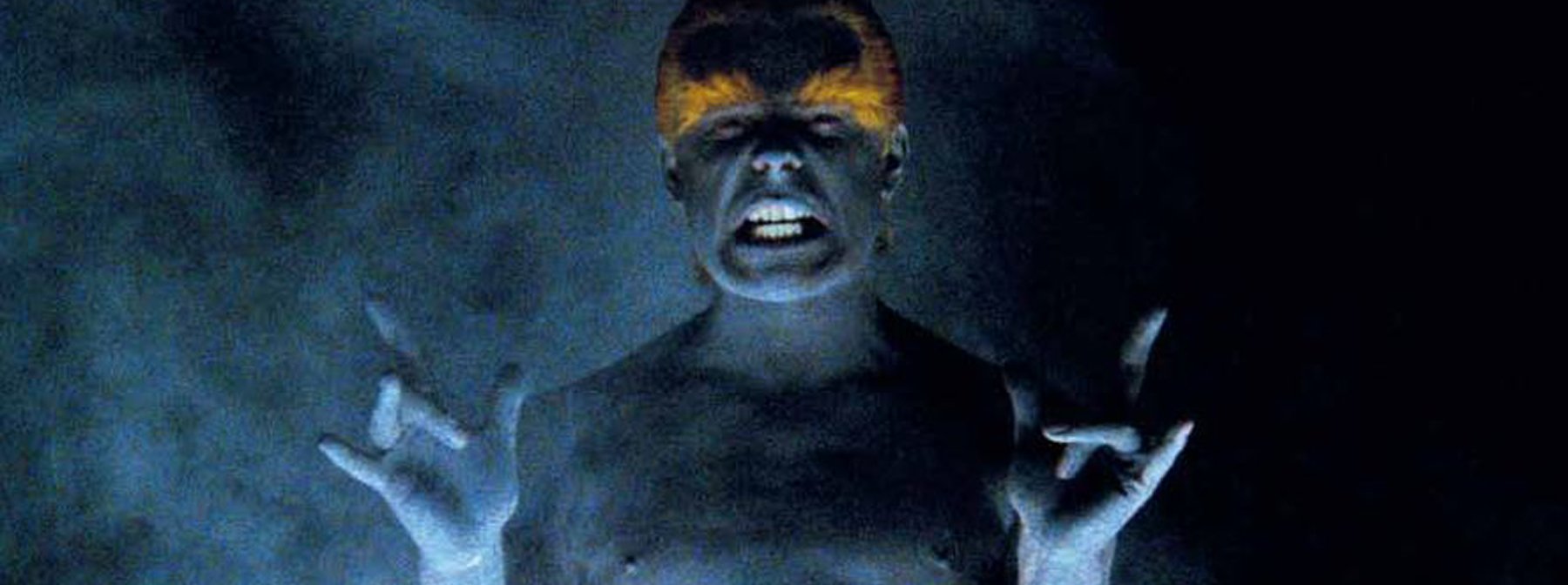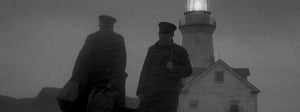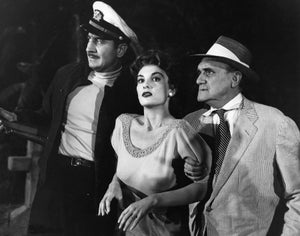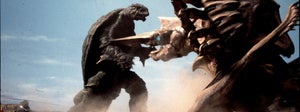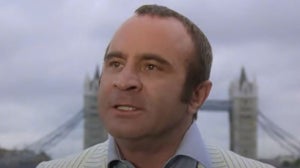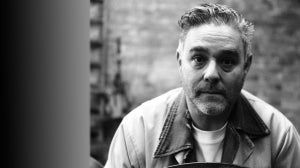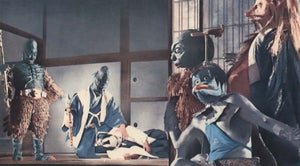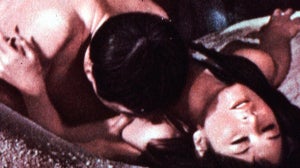
The UK may have a reputation for stoicism with “stiff upper lips” abound in the face of catastrophic adversity. But how exactly does one keep calm and carry on in the face of a nuclear bomb? Or while living in an fascistic police state? We’ve looked at a number of British films that have explored the theme of dystopia and how depictions of a brutal future have reflected societal worries of the time.
Nineteen Eighty Four (1984)
Director Michael Radford took on the daunting task of filming George Orwell’s seminal book with it’s prescient visions of the near future at short notice. Wanting to capitalise on releasing the film in the same year as its title (as the trailer intones “the film...of the book...of the year”), Radford holed up in Paris and wrote the screenplay in three weeks. They even began filming without securing the services of an actor to play one of the leading roles O’Brien, later to be Richard Burton after Sean Connery, Rod Steiger and Marlon Brando had all turned it down.
In what is a very faithful adaptation of the book with exceptional performances from John Hurt and Suzanna Hamilton as Winston and Julia, two lovers trapped in a society riddled with surveillance and oppression, the film makes tremendous use of authentic London locations still bomb damaged from the Second World War. The misery of the book is equally captured by Roger Deakins’ stunning cinematography. Radford and Deakins wanted the film to be in black and white, the producers wanted it in colour. The compromise? A washed out silver effect that reflects the drained society it depicts.
The book may have been written in 1949 with Orwell reeling from the conflicts of that decade but its themes and concerns were just as relevant as they were in the 1980s and indeed, even now. It doesn’t take much to see the parallels of Winston and his cohorts being shown updates from a foreign war just a couple of years after the British conflict in The Falkland Islands.
https://www.youtube.com/watch?v=T8BA7adK6XA
The Comic (1985)
Orange haired Sam Coex is an up-and-coming stand up comedian trying to entertain inhabitants suffering under a brutal police state. When his ambitions drive him to murder, it does wonders for his career trajectory however he makes more enemies than friends on the way up and the paranoia of the society he lives in seeps insidiously into his consciousness.
There’s no other way around it – this is an oddity of a film that will confuse and shock in equal measure. With a larger than life performance from lead Steve Monroe, The Comic goes into new directions when you least expect it and keeps you guessing to the end. This is a night time world where the outside is cold and dangerous while indoors are sleazy night clubs or poorly lit and poorly wallpapered living rooms. It doesn’t rely on special effects to create a vision of the future, more a distorted version of its present and is so dark that it’ll take more than an aspiring comedian to lighten the mood.
Released in 1985, it undoubtedly took some inspiration from the aforementioned Nineteen Eighty Four as well as Cold War tensions of the time. The jackbooted villains represent both Britain’s fascination with its past enemies and the threat that came from behind the Iron Curtain.
https://www.youtube.com/watch?v=kZi5hlO92GQ
Fahrenheit 451 (1966)
You could perhaps argue Fahrenheit 451 is more a French film than a British one but it doesn’t feel right to omit this from our dystopian list. François Truffaut’s only English language film is an adaptation of Ray Bradbury’s sci-fi novel where books have been outlawed and firemen employed to seek and destroy them. Oskar Werner plays Guy Montag, a fireman who after speaking with his neighbour Clarisse (Julie Christie in a dual role where she also plays Guy's superficial wife, Linda) begins to think he may be fighting for the wrong side.
One of the most striking aspects of the film is it’s filming locations. The awesome looking French monorail near Orléans offers a new way of travel while Guy and his wife Linda live on a very British suburban street, the kind you expect to see in an amiable sitcom - think Keeping Up Appearances. The film also makes great use of the Alton Estate in Roehampton, one of the UK’s largest council estates and at the time considered a triumph in social housing. Its brutalist architecture chiming in with both the futurism of the film as well as its theme of rigid oppression. The Thamesmead Estate in London has a similar aesthetic and was most famously seen a few years later in another dystopian classic A Clockwork Orange (1971).
https://www.youtube.com/watch?v=r6VUExA5UKA
When The Wind Blows (1986)
We could have chosen 1984's Threads for this, a chilling television film first shown on the BBC detailing the aftermath of a nuclear bomb being dropped in the UK, but we’ve decided to pick up the…err thread of atomic devastation in the animated film When The Wind Blows. Based on the graphic novel by acclaimed children’s author Raymond Briggs (The Snowman), we follow the story of Jim and Hilda Bloggs, an elderly couple in West Sussex who make plans for the apocalypse after hearing depressing news broadcasts. When a bomb is dropped, the couple struggle to adapt to the new world where so much has been destroyed.
Presenting a very human story of international conflict with the honest, simple couple affected by two warring faraway nations, it is an uncomfortable but thought-provoking watch. Released in 1986 at a time when Cold War tensions remained high, it struck an anxious chord. If the worst happens then we are all affected, even those of us in our cosy homes in the suburbs. Scored by Roger Waters with a title track from David Bowie, this remains a deeply moving and sensitive portrayal of nightmarish horrors.
https://www.youtube.com/watch?v=9pJKdTqYijY
Children of Men (2005)
The 90s didn’t dabble much in dystopia, perhaps a wave of political optimism and Cool Britannia had temporarily squashed a fear of the future but they came back with a bang in the early 2000s. 28 Days Later (2002) with its iconic shots of an empty London, V For Vendetta (2005) with a totalitarian regime running the UK and even Edgar Wright’s brilliant zombie apocalypse comedy Shaun of the Dead (2004), proved that there was an excitement in watching things all going Pete Tong.
Enter Children of Men, Alfonso Cuarón’s adaptation of P.D. James’ 1992 novel, which envisions the year 2027 where mass infertility has brought society to the verge of collapse. The UK remains just about functional but is ravaged by war and an increasingly powerful police state. With a strong cast (Clive Owen, Julianne Moore, Michael Caine, Chiwetel Ejiofor etc.) and its farsighted vision in the wake of Brexit, pandemics and other crises, it is frequently cited as one of the best Sci-Fi films of the 21st century.
https://www.youtube.com/watch?v=2VT2apoX90o&t=1s
The World’s End (2013)
We end with quite literally The World’s End, another Edgar Wright entry that deals with aliens rather than zombies this time, as a group of childhood friends reunite on a pub crawl in their home town and discover that humans are being replaced by robots. Certainly the lightest entry on our list with a plot that leans more on the fantastic than the realistic, like the other films in The Cornetto Trilogy with Simon Pegg and Nick Frost it tries to capture different aspects of everyday British life. From the suburbs of North London, quaint villages in Somerset and provincial towns, or rather Garden Cities in the shape of Letchworth and Welwyn, all of them bring a outlandish concept and place it in a particularly British setting.
The dystopia here is subtle, so subtle in fact that most people don’t even know they’re living in it. That people have been surreptitiously replaced with androids takes us back to a time when conspiracy theorists were exactly that. And unique to this list, this dystopia doesn’t appear to be that bad especially to Pegg’s Gary King. As long as there’s a pub open nearby then everything will be alright.
https://www.youtube.com/watch?v=hFo7eJR2cvc

